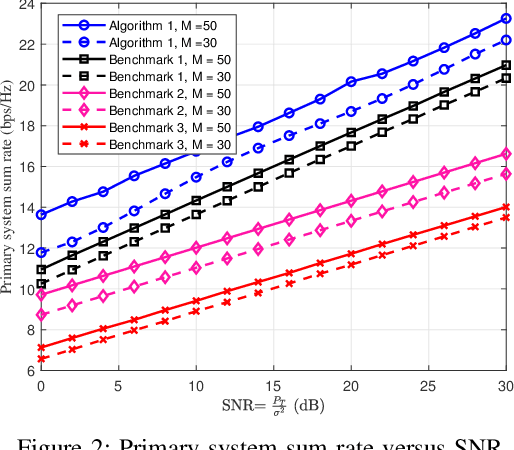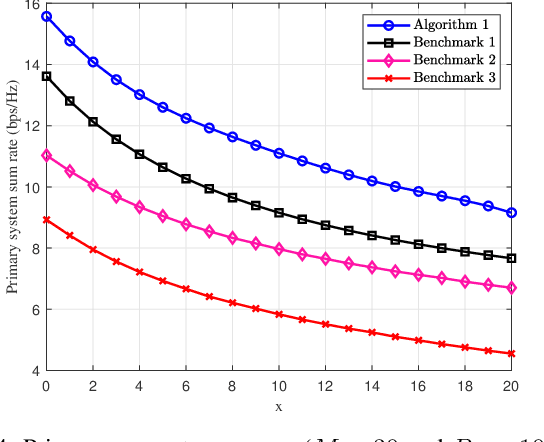IRS-Enabled Backscattering in a Downlink Non-Orthogonal Multiple Access System
Paper and Code
Sep 02, 2022



Intelligent reflecting surface (IRS)-enabled backscatter communications can be enabled by an access point (AP) that splits its transmit signal into modulated and unmodulated parts. This letter integrates non-orthogonal multiple access (NOMA) with this method to create a two-user primary system and a secondary system of IRS data. Considering the decoding order, we maximize the rate of the strongest primary user by jointly optimizing the IRS phase shifts, power splitting (PS) factor at the AP, and NOMA power coefficients while guaranteeing the quality of service (QoS) for both weak user and IRS data in the primary and secondary systems, respectively. The resulting optimization problem is non-convex. Thus, we split it into three parts and develop an alternating optimization (AO) algorithm. The advantage is that we derive closed-form solutions for the PS factor and NOMA power coefficients in the first two parts. In the third part, we optimize the phase shifts by exploiting semi-definite relaxation (SDR) and penalty techniques to handle the unit-modulus constraints. This algorithm achieves substantial gains (e.g., 40--68%) compared to relevant baseline schemes.
 Add to Chrome
Add to Chrome Add to Firefox
Add to Firefox Add to Edge
Add to Edge